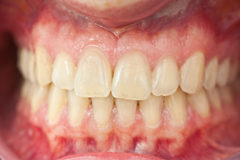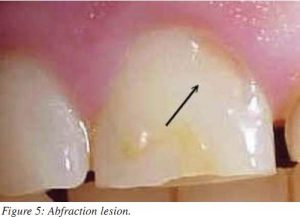Periodontal disease can affect your overall health.
While not life-threatening, periodontal disease, also known as gum diseases, can affect your overall health. For instance, bacteria from infection can spread to your bloodstream and has been linked with rheumatoid arthritis, respiratory disease, heart disease, stroke, and diabetes.
Most commonly, periodontitis causes gums to bleed and recede. Without treatment, it can result in bone and tooth loss, and the damage is usually permanent. If treatment is required, your dentist will determine whether surgical or non-surgical treatment is necessary.
Non-Surgical Treatments
If your periodontitis is not advanced, treatment may involve non-invasive procedures.
- Antibiotics: Oral antibiotics are often prescribed to eliminate bacterial infection; topical antibiotics also help. They include mouth rinses or antibiotic gels that your dentist inserts into the pockets between your teeth after the initial deep cleaning.
- Scaling: This removes hardened plaque (tartar) and bacteria from the surface of your teeth and above and below the gumline. It’s usually performed by a dental hygienist and may take multiple appointments to complete.
- Root Planing: This is much like scaling, except it takes place on the roots of the teeth sitting below the gumline. Your dentist or periodontist will gently push aside gum tissue and chip tartar from the roots.
Surgical Treatments
If your periodontitis is advanced, your dentist may recommend dental surgery.
- Pocket Reduction (Flap) Surgery: This is especially useful if you have deep pockets full of tartar. The periodontist lifts the gums off the teeth to remove tartar buildup, clean the area, and stitch the gums to fit snugly against the teeth.
- Bone Grafting: If the bone around the tooth is damaged or destroyed, this procedure may be necessary to hold the tooth in place and promote regrowth. The damaged bone is replaced with either natural or artificial material.
- Guided Tissue Regeneration: GTR aids in the regrowth of bone and connective tissue. The dentist places a small mesh-like material between the damaged bone and the gum tissue.
- Soft Tissue Grafting: This procedure may be required to reduce the risk of further damage. A dental surgeon will typically remove tissue from the roof of the mouth and graft it to the area where the gum has receded, covering any exposed roots.
Don’t wait until a problem with your gums gets out of your control. Reach out to book your appointment with our team of dedicated dental specialists today!
The dental experts at keshavarz Dentistry in Brampton can take care of all gum disease issues, including prevention.
Book a dental appointment with us by calling (905) 791-3867 or book online. You’ll be glad you did!
Yours in Excellent Oral Hygiene,
Dr. F. Keshavarz Dentistry in Brampton.







